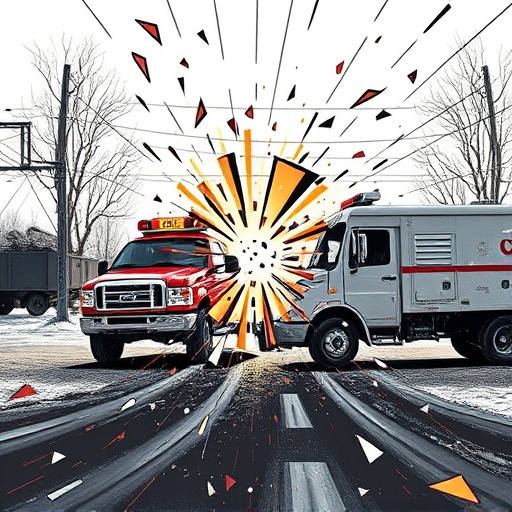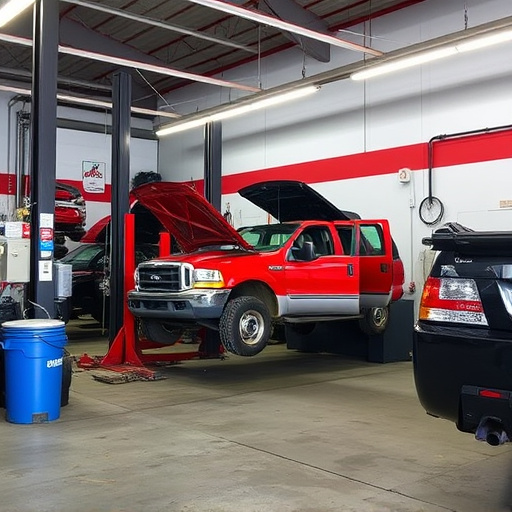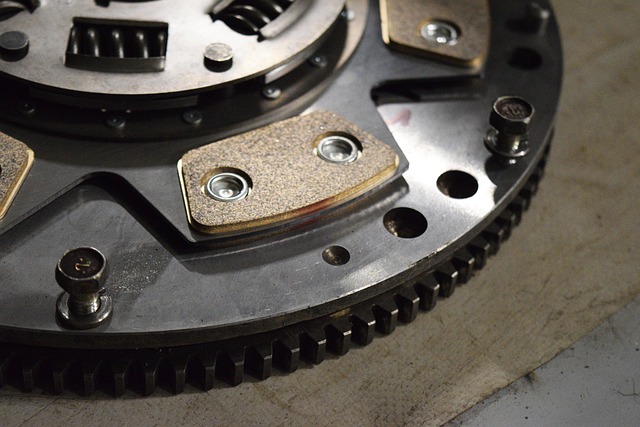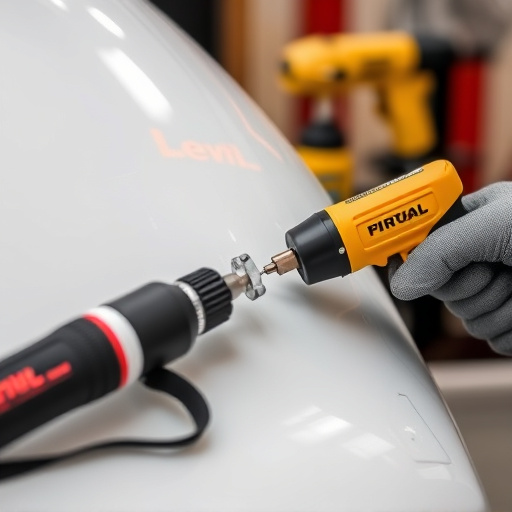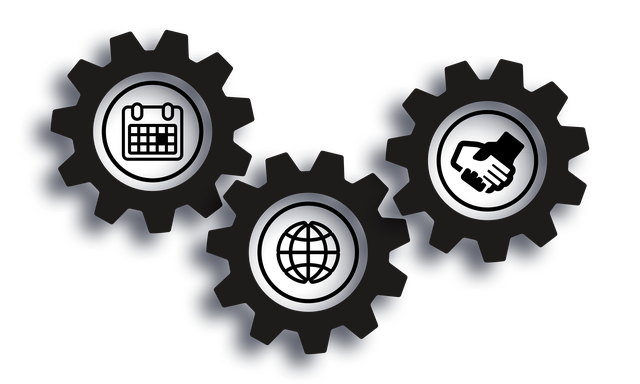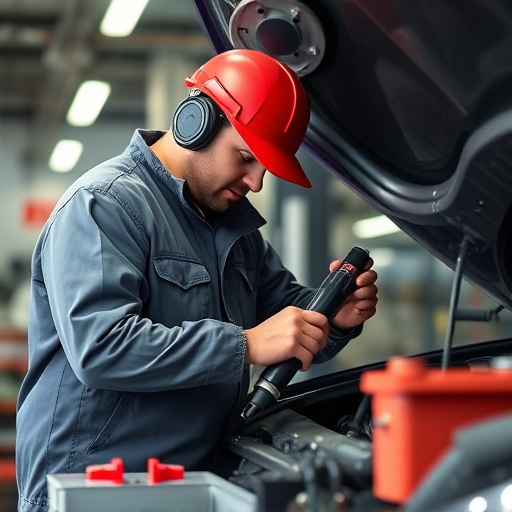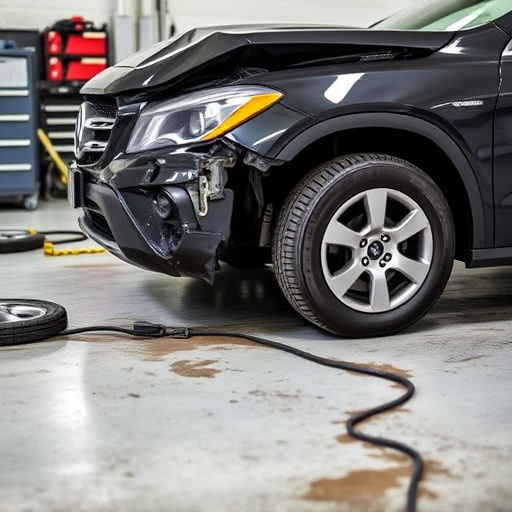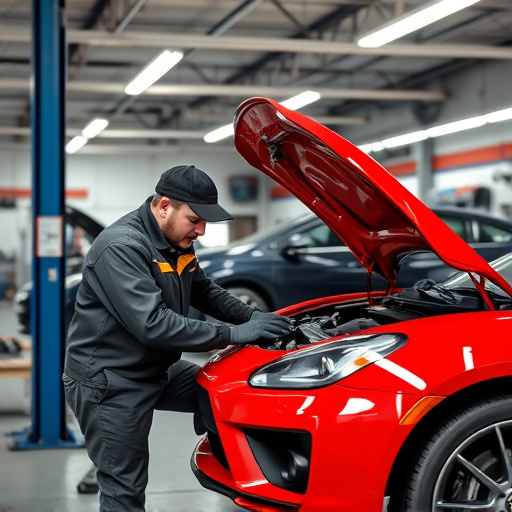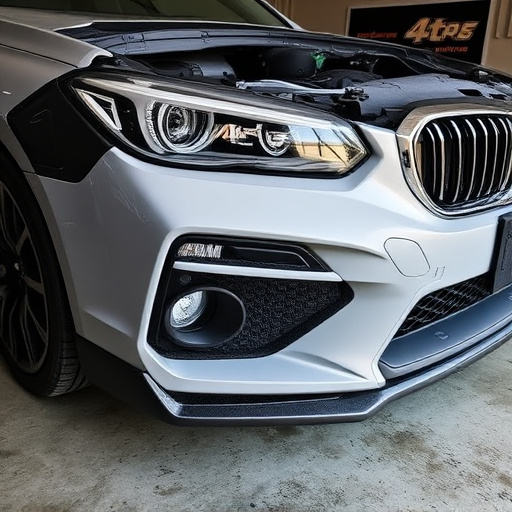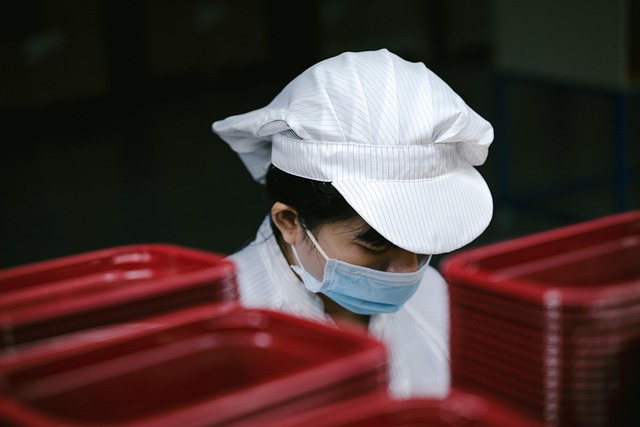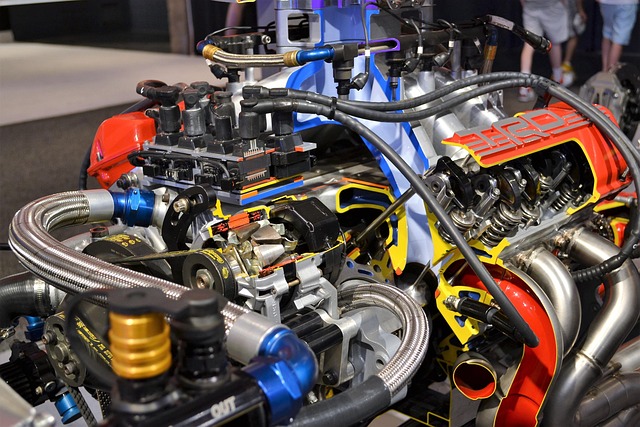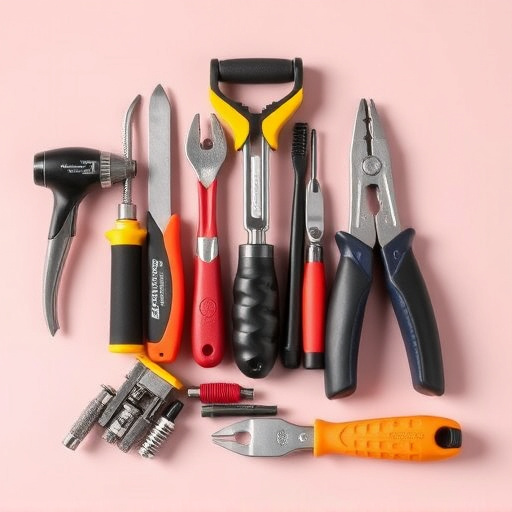Plasma cutting collision repair is a game-changer in the automotive industry, offering precise, fast, and non-invasive solutions for complex auto body repairs. Its versatility allows technicians to handle diverse materials and thicknesses, preserving vehicle integrity and ensuring high-quality restoration. Best practices, including staff training and clean workspaces, are essential for maximizing efficiency and achieving intricate details during repairs.
Plasma cutting collision repair has emerged as a game-changer in automotive shops, revolutionizing traditional metal fabrication methods. This article explores the transformative power of plasma cutting technology and its myriad advantages in shop settings. From enhancing precision and speed to reducing material waste, plasma cutting offers an efficient, cost-effective solution for collision repair professionals. We’ll delve into best practices and tips to ensure effective, high-quality repairs using this advanced technique.
- Understanding Plasma Cutting Technology for Collision Repair
- Advantages of Plasma Cutting in Shop Settings
- Best Practices and Tips for Effective Collision Repair using Plasma Cutting
Understanding Plasma Cutting Technology for Collision Repair

Plasma cutting technology has emerged as a game-changer in the realm of collision repair, offering precision and efficiency that were once unattainable with traditional methods. This innovative process involves using a plasma arc to cut through various materials, including metal, with remarkable speed and accuracy. For auto body services and restoration, plasma cutting collision repair presents numerous advantages.
Compared to laser or water jet cutting, plasma cutting provides a broader range of capabilities, making it suitable for diverse projects in the car bodywork domain. It can handle complex shapes, curves, and intricate designs without sacrificing precision. Moreover, plasma cutting generates minimal heat input, preserving the integrity of the surrounding material and reducing the risk of damage during the repair process. This non-invasive approach ensures that auto body restoration work is not only effective but also conserves the original structure of the vehicle.
Advantages of Plasma Cutting in Shop Settings

Plasma cutting has revolutionized collision repair in shops, offering several advantages over traditional methods. Its precision and speed make it an invaluable tool for auto frame repair, enabling technicians to quickly and accurately cut and reshape metal panels with minimal waste. This not only saves time but also reduces the cost of materials, making it a cost-effective solution for both shops and their customers.
Furthermore, plasma cutting provides exceptional versatility in handling various materials and thicknesses, allowing auto repair services to cater to a wide range of vehicle models and damage types. The clean cuts and minimal heat input ensure that surrounding materials remain intact, preserving the overall integrity of the vehicle during the repair process. This level of precision is particularly beneficial for intricate auto frame repairs, ensuring that the final result aligns with the original manufacturing standards.
Best Practices and Tips for Effective Collision Repair using Plasma Cutting

When it comes to collision repair using plasma cutting, best practices are paramount. First and foremost, ensuring proper training for all staff involved is crucial. Plasma cutters require a specific skill set due to their advanced technology, so comprehensive training will guarantee accurate cuts and minimal waste, which translates to cost savings. Additionally, maintaining a clean and organized workspace enhances efficiency. Clear pathways allow technicians to maneuver effortlessly around the vehicle, reducing the risk of accidents and improving overall productivity.
Effective collision repair involves precise measuring and marking before cutting. Using the latest software tools for design and layout ensures accurate cuts every time. Furthermore, utilizing plasma cutting for auto painting and vehicle bodywork repairs offers several advantages. It allows for intricate detail work, ensuring that even the most complex shapes are precisely cut. This precision is vital in achieving a seamless finish during the subsequent auto painting stage, ultimately delivering top-quality collision repair services.
Plasma cutting collision repair has emerged as a game-changer in automotive workshops, offering precision, speed, and efficiency. By understanding and adopting this technology, shops can enhance their capabilities, reduce downtime, and deliver superior quality repairs. The advantages of plasma cutting, from cost-effectiveness to its minimal impact on the environment, make it an attractive option for modern collision repair facilities. Implementing best practices and staying updated with the latest tips ensures that workshops maximize the benefits of plasma cutting technology, ultimately improving customer satisfaction.
